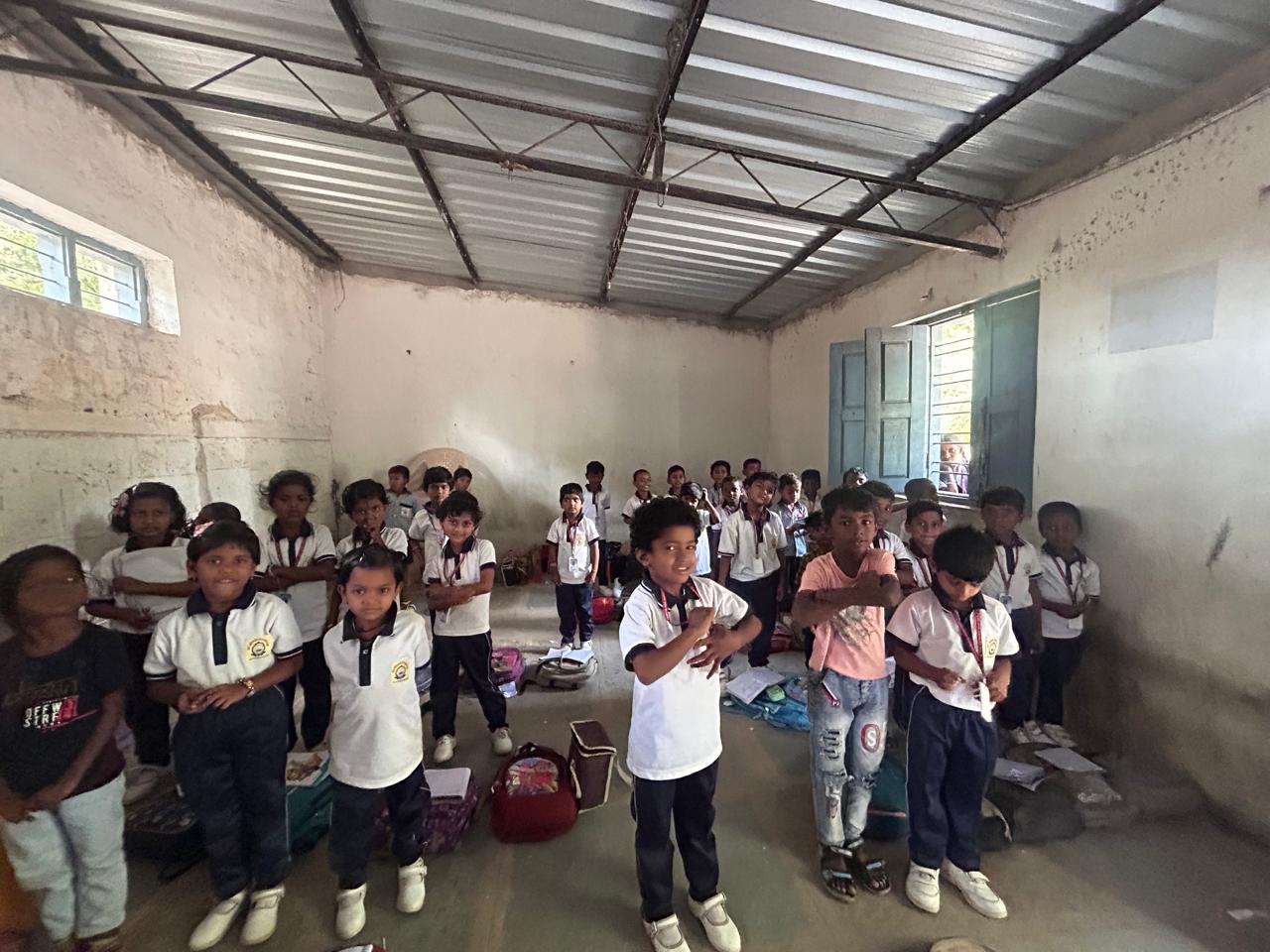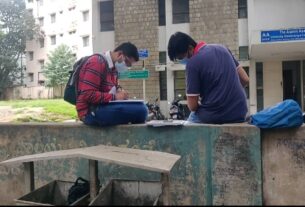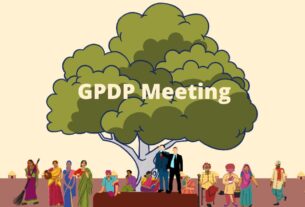Scholarship delays shatter dreams of rural students in Lingsugur, Karnataka.
The air hung heavy with the promise of another scorching day. The sun, a relentless white orb in the cloudless sky, cast Tawargera village in Karnataka dusty main road in a shimmering heat haze. Kavya, in a faded salwar kameez, stood at the bus stop, her worn backpack slung on one shoulder. Today was the day.
With trembling fingers, she fumbled in her pocket and retrieved a crumpled and folded hundred-rupee note – all that remained from the meager provisions her parents had scraped together for her new life in Lingsugur . It was a paltry sum for the journey ahead, but it held the weight of their dreams.
This scholarship, a lifeline thrown from the distant town of Lingsugur, was their last hope. With a final glance at her parents, Kavya stepped onto the bus, her worn sandals clinking against the metal steps. Inside, the air was filled with the smell of sweat and stale tobacco, along with a faint hint of something familiar yet distant – a memory, perhaps, of a land where rain was plentiful. Kavya knew that Lingsugur, unlike her lush green village of Tawargera, was a dry state, a reminder of the stark differences between her past and her present.
As the bus lurched forward, leaving behind a trail of red dust, Kavya settled into her seat and finally reached Lingsugur. The scholarship was her ray of hope, her ticket out of the grip of poverty.
But now, sitting on the hard plastic seat of the classroom, that hope felt like a heavy burden in Kavya’s stomach. Every day, with a heart pounding in her chest, Kavya approached her teachers. But each response was like a dagger to her heart – “soon you will receive the scholarship,” they would say, or “any day now” but one year had slipped by, each day blending into the next and the scholarship, the lifeline that had brought her to Lingsugur, remained elusive, like a mirage in the desert of their need. Kavya’s classmates, numbering in the hundreds, shared her silent pain. Their old textbooks, passed down from one sibling to another, whispered of a common fear – the fear of their dreams crumbling due to empty pockets.
In India, scholarship portals play a crucial role in facilitating access to financial aid for students across various educational levels. These portals serve as centralized platforms where students can browse, apply for, and track the status of different scholarship schemes offered by the government, non-governmental organizations, educational institutions, and other entities.
Among the prominent scholarship portals in India are the National Scholarship Portal (NSP), State Scholarship Portals (SSPs), and specialized portals catering to specific demographic groups or regions. Additionally, specialized scholarship portals target specific demographic groups or educational levels. For example, portals like the Vidyasiri Scholarship Portal in Karnataka focus on scholarships for students belonging to backward classes, scheduled castes, and other marginalized communities within the state. Similarly, the Ministry of Minority Affairs operates a scholarship portal specifically for minority communities, offering scholarships for educational advancement.
“Amma worries every day,” confided Kavya, her voice heavy with concern. “‘How will we manage the hostel fees, the books?,’ she keeps saying.”Education is the only way out of this life for us, but these delays…every day I worry that my parents will take me out of school. It breaks my heart to even think about it.” her voice trailed off, thick with unshed tears.
Kavya further said, “Our school, VV Sangha Basaveshwara, asked us to pay INR 100 for registration fee and promised scholarships to each and every one of us. Even that INR 100 was too much for us since the parents of most of the students here are from financially poor backgrounds. It’s been over a year, and we’re still waiting for the scholarships we were supposed to receive from the NSP and Vidyashree portal.
When we ask our teachers about scholarships, earlier they used to say it would come soon, but now even they admit they don’t know if it will come or not since they don’t get any update from the scholarship disbursement department. It’s disheartening. We trusted them, and now we feel betrayed. It’s like our hopes are slipping away, and there’s nothing we can do about it.”
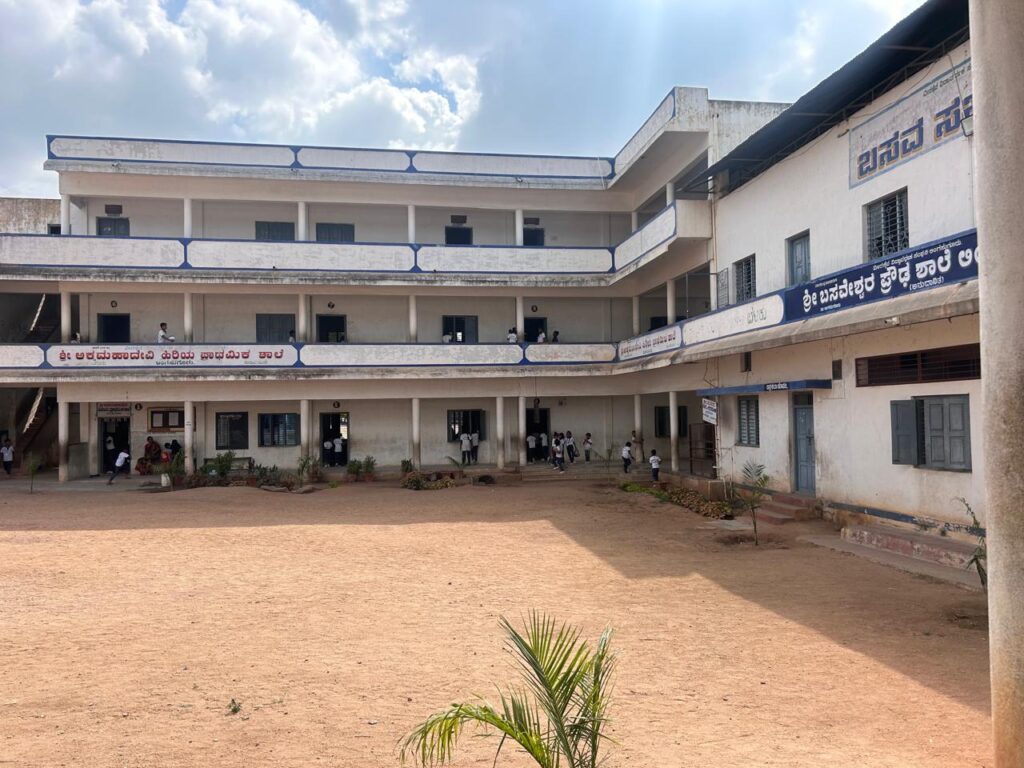
The distribution center for disbursing funds to matric students in Lingsugur is situated in Raichur. Within the Block Education Office (BEO), distinct divisions are established to oversee various aspects of scholarship allocation. These divisions include the Minority Office and the Social Welfare Department, each tasked with handling the distribution of scholarship funds.
Bheemappa, minority department head said, “The reason behind the school’s request for INR 100 from students remains unclear, as such fees are not permitted within our policies. We never ask students to give any registration amount.”
Bheemappa further added, “The SSP scholarship for minority students ranges from INR 2.5 Lakhs to INR 10 Lakhs. To be eligible for these scholarships, candidates must meet certain criteria. Primarily, they must be permanent residents of the state. Additionally, the annual family income threshold for eligibility is set at INR 2 Lakhs for ST candidates and INR 1 Lakh for OBC candidates.
These criteria aim to ensure that financial assistance is provided to those who truly require it, while also promoting equitable access to education for minority students.” Mounish, who works at the Social welfare department of Raichur said, “we only get a budget for 4000 students, however the applicants are more than 4000, we get 50% money from the State and 50% from central and sometimes there is a delay from the government.”
He said, “or the students must have not filed the documents correctly if they are still not receiving the funds.”
In Karnataka, the pursuit of Sustainable Development Goal (SDG) 4 – Quality Education, has encountered significant challenges, particularly regarding the provision of scholarships to deserving students. Despite concerted efforts to promote equitable access to education and enhance educational outcomes, the state has grappled with the failure to effectively implement scholarship programs, thereby impeding progress towards SDG 4.
Principal at VV Sangha Basaveshwara School said, “What would I possibly gain by withholding funds from innocent children? It pains me deeply to see their dreams deferred. The truth is, we haven’t received a penny from the Centre ourselves. Our hands are tied, and our hearts ache for our students. They deserve better than this uncertainty and disappointment. Education is their lifeline, their ticket to a brighter future. But without the necessary support, their aspirations remain out of reach. We’re doing everything in our power to advocate for their rights, but until then, our hands remain empty, and our hearts heavy with regret.”
According to data from the Sarva Shiksha Abhiyan, the highest percentage of out-of-school children in the country are from Muslim communities (4.43%), followed by Hindus (2.73%), Christians (1.52%), and other religious groups (1.26%). Between 2006 and 2013, scholarships awarded to minority students witnessed a steady rise from approximately INR 75,000 to over 70 lakh. However, in 2019, the Centre unveiled a plan to grant scholarships to one crore minority students annually, a promise that remains unfulfilled.
Over recent years, the government has discontinued five schemes and significantly reduced funds for four other programs. The labor department received over 13 lakh applications for the year 2022-23, identifying 7 lakh students as beneficiaries. The department has opted to reduce the scholarship amount by 80-85 per cent across all educational levels, from schools to higher educational institutions. This reduction disproportionately affected students pursuing fields such as engineering, medicine, and other postgraduate studies, according to data.
Kavya wasn’t alone in her anxiety. Across the classroom bench, Kavya’s eyes met Mallika’s, a fellow student from their class. Mallika, with her sharp mind and insatiable thirst for knowledge, was a natural in Science, her potential as bright as the constellations they dreamt of studying through a microscope someday. Unlike Kavya, whose family had scrimped and saved every rupee for the meager sum in her pocket, Mallika’s parents, daily laborers, had poured their small sum of meager earnings into their daughter’s education.
Mallika was the middle child and she was the first girl in her family to reach Class 12, a beacon of hope in a lineage defined by backbreaking work and limited opportunities. Their intertwined gazes spoke volumes, echoing the silent struggles, dreams, and aspirations.
Mallika emotionally said, “I am the first girl in my family to reach this far in school, my parents’ hopes are attached to me. With three siblings, we barely have enough food to eat sometimes. If I don’t get the scholarship, my parents will make me work like my elder brother. I’ve come too far to stop now. When will I get the scholarship? It’s not just about me; it’s about fulfilling the dreams my parents have sacrificed so much for. The uncertainty is suffocating, and the fear of losing everything we’ve worked for is unbearable.”
“I’ve seen my daughter, Mallika, study day and night to excel in her studies,” Lakshmi, Mallika’s mother’s voice trembled with emotion. “We’ve sacrificed everything to give her this chance. She’s the first in our family to reach this far in school, and her success means everything to us. But if she doesn’t get the scholarship, we’ll have no choice but to ask her to work, just like her brother. It breaks my heart to even think about it. All we want is for her to have a chance at a better life, but the uncertainty is tearing us apart.”
Education stands as the paramount instrument for fostering socio-economic advancement within a nation, particularly crucial for minority groups. Underlining the importance of education for religious minorities in India, the nation’s foremost think tank issued a policy document in 2017 urging for enhancements in the execution of existing programs. Nonetheless, over the recent years, the Centre has terminated two vital educational initiatives targeting religious minorities and rural areas.
Azeem Khan, student at Government school of Lingsugur said, “Despite the challenges I face as a student at the school, I am determined to pursue my education. After my father’s passing, my mother has been the sole breadwinner for our family. Despite our financial struggles, she insists that I continue my studies, believing in the power of education to change our circumstances. We have little money and the discontinuation of scholarship schemes has only added to our burden.”
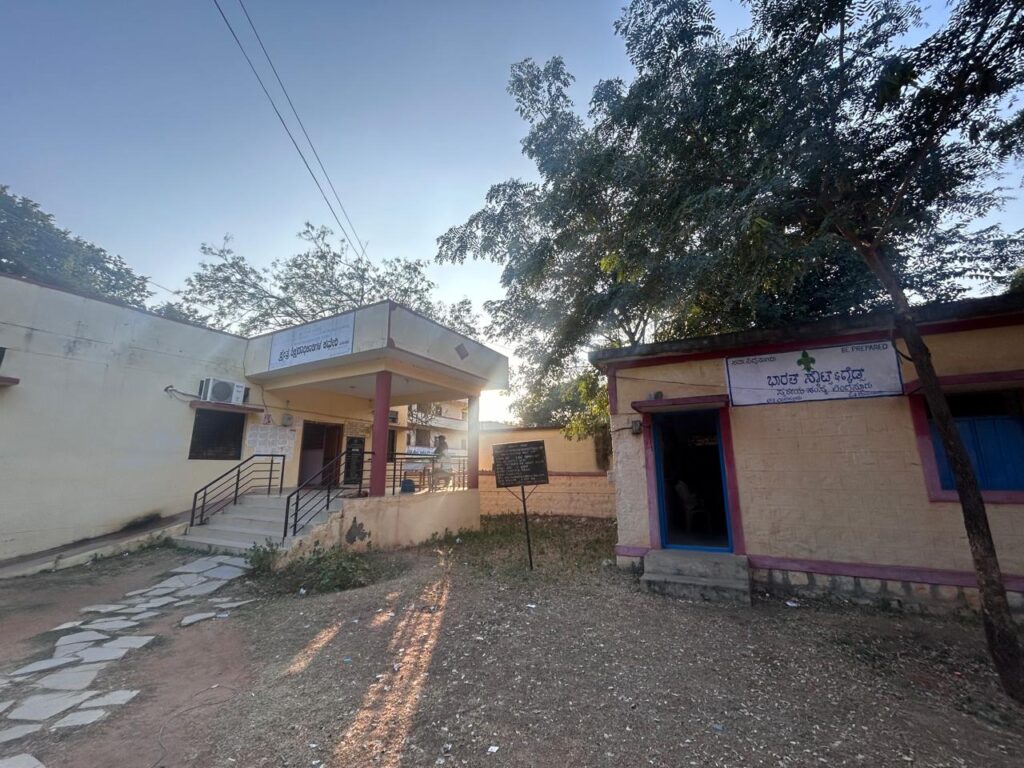
Sreekanth, Principal at Sir M Visveswarayya P U College of Science, relocated to Lingsugur from Bangalore to establish the school. He witnessed students dropping out due to financial constraints, depriving them of deserved education. Worse, some resort to destructive habits like drug use due to limited opportunities. He laments seeing their potential wasted due to circumstances beyond their control.
Sreekanth further added,, “After reviewing the documents submitted by every student, it’s clear that all necessary information has been provided. However, despite this, the students have yet to receive any funds. This leads me to believe that there may be some issues with the government’s handling of the situation. It’s possible that the funds haven’t been released as promised, or there could be instances of fraudulent activity, such as the creation of fake student IDs to access the funds. These concerns require further investigation to ensure fairness and transparency in the distribution process.”
Dr. Bhargavi D. Hemmige, a Professor at Jain University, Bangalore, underscores that scholarship initiatives offer transformative pathways for underrepresented demographics. Success depends on efficient resource allocation, transparency, and accountability. Simplified application processes and robust support mechanisms are vital. Addressing these challenges strengthens scholarship frameworks, empowering more learners to pursue academic ambitions and fostering societal progression and inclusivity.
Kavya said, “We trusted them, and now we feel betrayed. It’s like our hopes are slipping away, and there’s nothing we can do about it.” This sentiment encapsulates the collective disillusionment felt by students across the nation who are caught in the crossfire of bureaucratic inefficiencies and broken promises. It’s time for tangible action to ensure that every deserving student receives the support they need to fulfill their aspirations and contribute to a brighter future for themselves and their communities.

